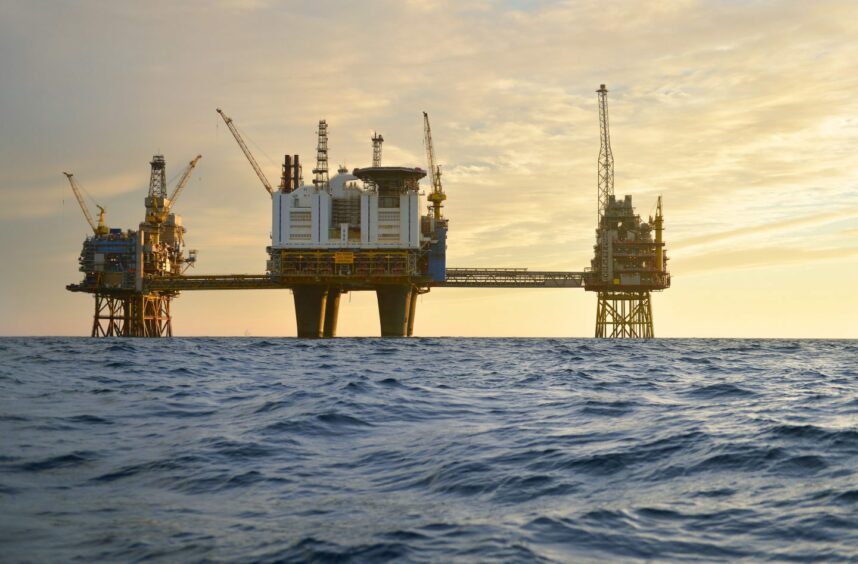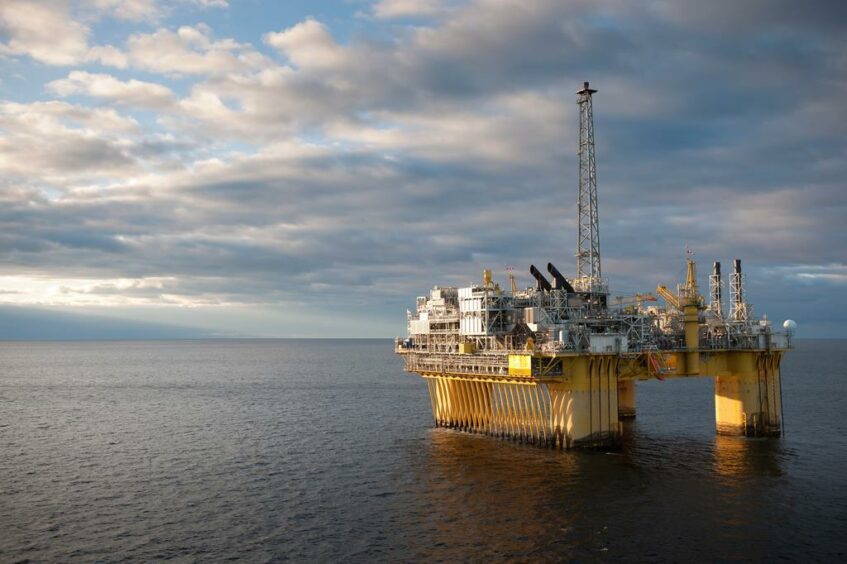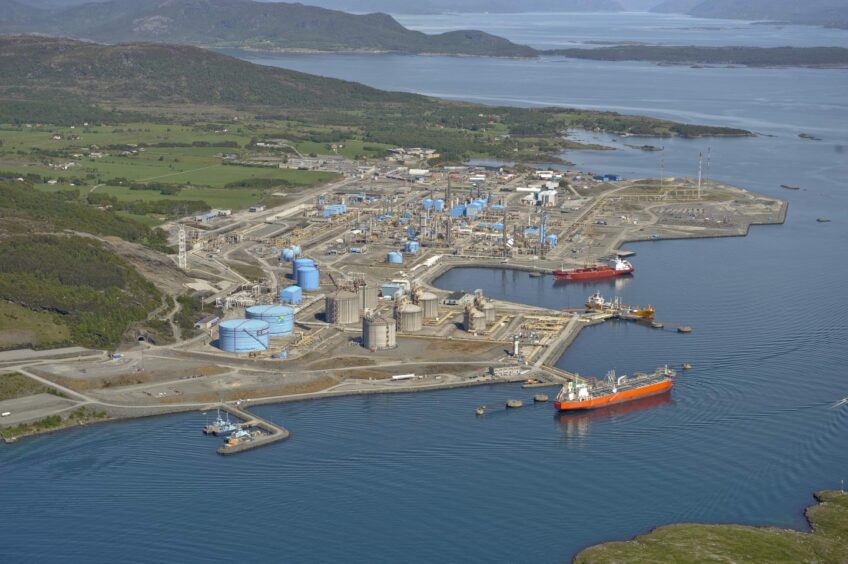
As the European Union and the UK both scramble to replace Russian fossil fuel supplies, gas in particular, Norway has signalled its intention to step up as the partner of choice.
A new supply deal between the bloc and the Nordic nation was inked in June, under which Norway – already the continent’s second-largest supplier – would ship an extra 100 terrawatt-hours of energy to the European market, equivalent to around 9-10 billion cubic metres of gas (bcm).
“I never, ever mind being dependent on a close friend like Norway but we never again have to be dependent on somebody like Putin,” said EU climate head Frans Timmermans following his meeting with Norwegian energy minister Terje Aasland.
It comes as European leaders look to cut Russian energy imports by almost two-thirds this year, ahead of a total phase out of its fossil fuels by 2027 – all part of the ambitious REpowerEU plan unveiled earlier this year.
Their efforts have been made even more urgent – and more complex – as questions arise over whether Moscow will support continued gas transport via the Nord Stream pipeline.
Yet while Norway’s steadfast support is clearly appreciated, its ability to ramp up its gas exports is likely to be severely limited.
Last year the country exported 113 bcm via pipeline to the EU, or about 23% of total demand. (Russia-EU exports meanwhile, exceeded 155 bcm). Official Norwegian projections suggest that is likely to increase to 115 bcm this year, while total exports may reach 122 bcm when LNG and other volumes are included – an 8% increase overall.
The UK too is a major consumer. 32 bcm of the country’s 76 bcm gas consumption came from Norway last year, according to Offshore Energies UK’s (OEUK) 2022 Business Outlook report, while around 29 bcm of demand was met by domestic sources.
All told, forecasts from Oslo-headquartered consultancy Rystad Energy expect total Norwegian gas production to hit 126.5 bcm this year. However, Rystad vice president Emil Varre Sandøy was clear as to the difficulties of raising this ceiling any further.
“We are at max capacity for what we can produce and export,” he said. “Exporting is more of the issue. I think there could be some additional capacity to produce at the fields, but we are at the max capacity at processing and the pipeline capacity.”
“That is the bottleneck for increasing gas production even further, and obviously you can’t really expand either processing or pipeline capacity in a few years, it takes a lot of time to build a new pipeline or additional facilities for processing.
“At least during the next five years or so, production can’t really get any higher than what it is currently.”
Production boost
Efforts to boost production at source are already underway. In March the Norwegian energy ministry granted Equinor permissions for an additional 2.4 bcm of flexible production from key gas fields to help shore up EU exports over the summer.
The permits increased the ceiling for gas production at Equinor’s Troll, Oseberg and Heidrun fields, alongside the postponement of some turnaround activity until later in the year.
Equinor said the permit would enable exports from the Oseberg field to rise by about 1bcm, putting expected production at about 7bcm for the year.
Meanwhile, the under-construction Baltic Pipe – which carries up to 10bcm from Norway to Denmark and 3bcm into Poland – is due to be online in Q4 this year. Though it will add flexibility, consumers will still have to compete with other potential gas buyers to secure volumes.
Mr Sandøy said Norway may be able to raise overall production closer towards 130bcm, but it would require “very high production with almost no planned or unplanned production stops” – an achievement he described as “very unlikely.”
Moreover, the precariousness of the current level of output was highlighted just weeks ago, when industrial action by offshore workers threatened to shut in almost 60% of the country’s gas exports.
The strikes were called off at the eleventh hour following extraordinary intervention by labour minister Marte Mjøs Persen, with the strategic importance of gas stated as the overriding influence on the decision.
Ms Persen later added: “When the conflict can have such great social consequences for the whole of Europe, I have no choice but to intervene in the conflict… It is unjustifiable to let gas production stop to such an extent.”
However, the cost of living pressures that prompted the strikes have not receded – and ongoing mediation will be necessary if workers are to be dissuaded from further action in the future.
Political intervention
In the longer term, Norwegian production is set to decline towards the latter part of the decade, lending even greater urgency to demand reduction targets set by the EU and others.
Rystad expects peak gas production “towards the late 2020s” based on the current lot of projects either in development or expected to be developed.
“We expect quite a steep decline in gas production into the 2030s, but this is without any undiscovered resources. In order to maintain or even stop this decline, some new discoveries of gas are essential to keep up production,” Mr Sandøy added.
“But I think in general it is inevitable that the Norwegian gas production will decline in the 2030s because the largest gas fields – especially the Troll field, which is by far the largest – will then go into decline.”
Indeed, he said a find large enough to offset the decline in output from Troll was “really unlikely,” putting Norway on a firm downward trajectory even with its exploration efforts.
This is despite several large projects already on the horizon, including the likes of Aker BP and Equinor’s NOAKA area (600 million boe) and the 32-bcm Linnorm field – currently the largest undeveloped gas discovery on the country’s books.
Even with its potential, partners in the field – Petoro (30%), TotalEnergies (20%) and Equinor (20%) – are struggling to agree on a plan for the complex high-pressure, high temperature (HPHT) field, and operator Shell (30%) recently ruled out a standalone development.
This too may prompt intervention from politicians. Mr Sandøy said at least one party has advocated that companies that do not want to press on with development this year should sell out, in order ensure the field moves into production as fast as possible to produce gas for Europe.
“I think that’s probably a new way of looking at it after the Russian invasion and the increased demand for Norwegian gas,” he explained. “But I think in general there’s still this belief that that if the company say it’s not economically viable to develop a discovery, politicians shouldn’t really overrule that judgment.”
Other political battles may stall exploration efforts too. Norway’s minority coalition government has argued the need to expand exploration in new areas of the Barents Sea, though the opposition Socialist Left Party walked out of coalition talks last year over the government’s refusal to oppose new drilling. However it did later secure a deal to waylay some forms of new exploration into 2023.
Given the likely decade-plus timeline from discovery to production, the pursuit of more gas would be “a strategic and environmental mistake,” the party’s energy and climate spokesperson Lars Haltbrekken said.
With the government reliant on the party’s 13 MPs to pass coalition budgets, its opposition on the matter could prove pivotal.
A lack of new northern exploration would also preclude other infrastructure projects, such as a mooted pipeline to carry gas from the Barents Sea, either to EU markets or Norwegian LNG terminals.
“It was deemed non-commercial before the Russian invasion because it’s a big investment and there’s currently not enough discovered gas volumes in the Barents Sea to really justify a new pipeline,” Mr Mr Sandøy added. “But of course now with solidified demand for Norwegian gas this could potentially be a part of the solution for maintaining higher gas production into the 2030s.”
In the short term then, it’s clear that Norwegian gas has a role to play in Europe’s transition. But its supplies are likely to prove a limited stop gap at best, and further underline the bloc’s need to move away from gas altogether.
Recommended for you

 © Supplied by Equinor \ Oyvind Hag
© Supplied by Equinor \ Oyvind Hag © Supplied by ?yvind Hagen/Gassco
© Supplied by ?yvind Hagen/Gassco